PLA Portfolio Assessment
PLA Portfolio Assessment Course Subjects
- First Aid, CPR, and Safety (FIT-190) 3 credits







Course Description
This course is intended to be a primer in basic safety procedures and preventive safety in the recreation and sports industries with an emphasis on the fitness segment of the industry. The course explores the basic skills required to give emergency care in a fitness facility including basic first aid, CPR, and the use of an automatic external defibrillator (AED). The course also includes an orientation to the basics of accident prevention in fitness and related facilities.
Learning Outcomes
Through the Portfolio Assessment process, students will demonstrate that they can appropriately address the following outcomes:- Provide the basic skills necessary to engage in emergency first aid procedures that are pertinent to health and fitness-related facilities, including life-threatening emergencies such as heart attack.
- Provide an overview of the prevention of accidents in health and fitness-related facilities as well as other recreation and functionally related facilities. The goal is that the student can take notice of potential hazards in such facilities and report them to the senior management or correct them when appropriate.
- Appropriate certificates and articulation of the application/use of the knowledge must be included.
- Personal Fitness (PYT-161) 3 credits






- Students are provided an opportunity to assess their current level of health-related fitness and develop a physiologically sound program of physical activity to meet their needs and interests. Emphasis is on the concept of physical fitness as a lifetime commitment, and stressing the acquisition of specific knowledge, skill and motivation necessary to meet this commitment.
- Kinesiology (FIT-211) 3 credits



Course Description
Kinesiology is the study of the fundamental principles of human movement and their relationship to fitness and activity. Areas of study include the relationship of Kinesiology to Sport Psychology and Sociology, Motor Behavior/Motor Learning, Biomechanics, Exercise Physiology, and Sport Pedagogy. Topics covered are the examination of internal and external forces that act on the human body during movement, exercise and athletics; a study of the scientific principles of body mechanics including general anatomy and physiology and the interaction of the neuromuscular system with movement.
Learning Outcomes
Through the Portfolio Assessment process, students will demonstrate that they can appropriately address the following outcomes:- Explain the discipline of Kinesiology and related sub-disciplines.
- Define and apply movement terminology
- Describe the psychological influences of exercise in sport and physical activity.
- Use a theoretical model to explain the process of skill learning through measurement and evaluation.
- Explain how the body produces and uses energy for physical activity.
- Describe how the body responds and adapts to exercise.
- Apply mechanical principals to human movement through qualitative and quantitative analysis of a variety of movement tasks.
- Individual Assessment in Fitness and Wellness (FIT-230) 3 credits

Course Description
This course will allow students who are interested in careers in the fitness industry to obtain skills in fitness assessment. Students will learn how to design personalized physical fitness plans for clients with varying levels of fitness and wellness.
Learning Outcomes
Through the Portfolio Assessment process, students will demonstrate that they can appropriately address the following outcomes:
- Discuss appropriate connections between physical activity and overall health.
- Select and administer appropriate field-test protocols for assessment of cardiorespiratory endurance, muscular strength, muscular endurance, body composition, and joint flexibility.
- Design appropriate exercise prescriptions that are progressive and adaptable to environmental and lifestyle changes.
- Identify and discuss ways to overcome obstacles to regular physical activity
- Briefly explain the following:
- Chronic diseases
- Lifestyle choices
- Physical activity
- Health screening
- Risk classification
- Blood pressure, heart rate, and cardio-rhythm assessment
- Lab vs. field testing
- Assessing cardiorespiratory fitness
- Cardiorespiratory assessment tests
- Assessing muscular strength and endurance
- Understanding muscular strength, power, and endurance
- Tests that measure strength and endurance
- Assessing body composition
- Body composition and fitness
- Methods of estimating body fat
- Assessing flexibility and designing stretching programs
- Definition and nature of joint flexibility
- Methods of measuring joint flexibility
- Designing exercise programs
- Interpretation of assessment results
- Developing client-/patient-based goals
- Developing a successful fitness program
- Chronic diseases
- Discuss appropriate connections between physical activity and overall health.
Fitness
More  's indicate a better match.
's indicate a better match.
Courses 1-4 of 4 matches.
